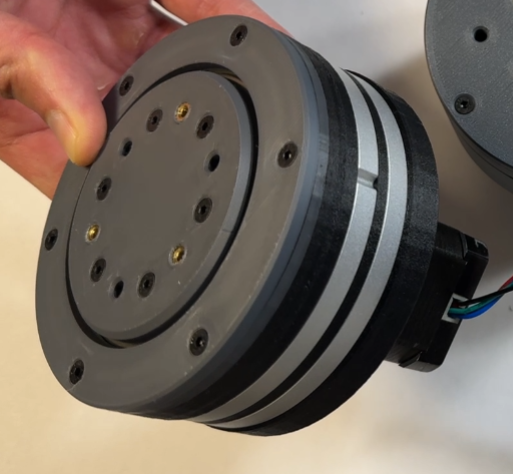
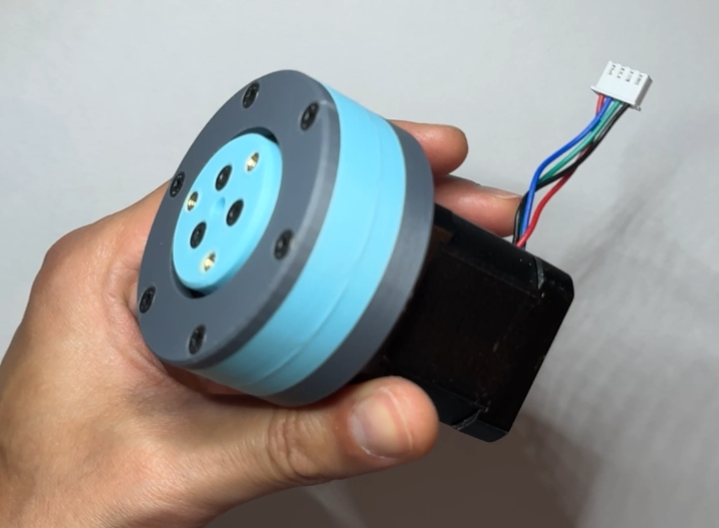


This type of reducer is, in a way, like cycloidal drives. However, I believe it has many benefits. First, the part count is much lower. We only need a few bearings, as opposed to cycloid drives where, essentially, the number of bearings/bushings you use, is a factor of the gear ratio you are seeking.
Another big advantage over cycloidal drives is that we can easily, with off-the-shelf parts, achieve metal-on-metal contact for torque transmission. This is because we can use a deep groove ball bearing as the eccentric cam. The rolling elements are either steel bearings balls or steel pins. Then, all we have left with is the wave disk, which has a simple 2D profile that is relatively cheap to manufacture in metal.
There’s not much information online about this type of reducer. For this reason, I developed my own web app that can generate the correct wave profile and then download it in DXF format.
For this project I decided to make four different versions. Each of them will be tested in different materials for the wave disc. Also, I will be comparing the effect of using balls or pins as the rolling element.
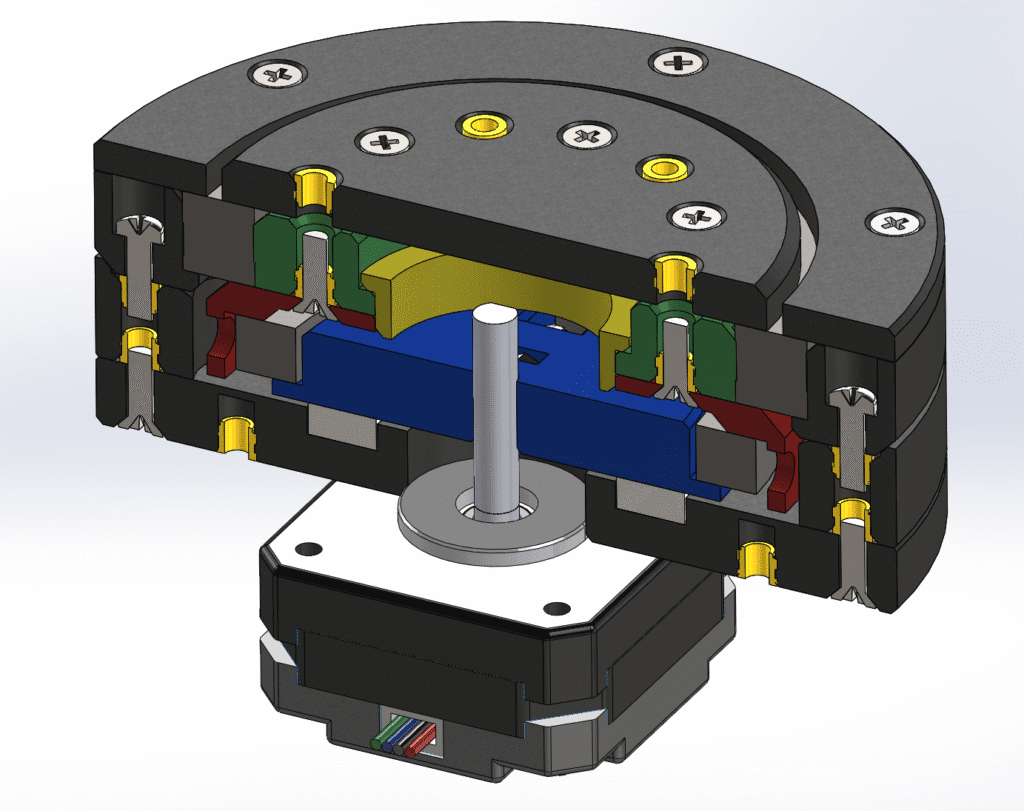

This design is built on top of the previous one. We have a second wave disc that is offset 180 degrees from the first one. Because of this, the separator needs to grow to carry a second row of rolling elements. Similarly, we have a second eccentric cam that is coupled to the first but offset 180 degrees.
The design requires twice the number of rolling elements compared to the 1-Phase design. However, this results in a smoother output rotation that is free of vibration.

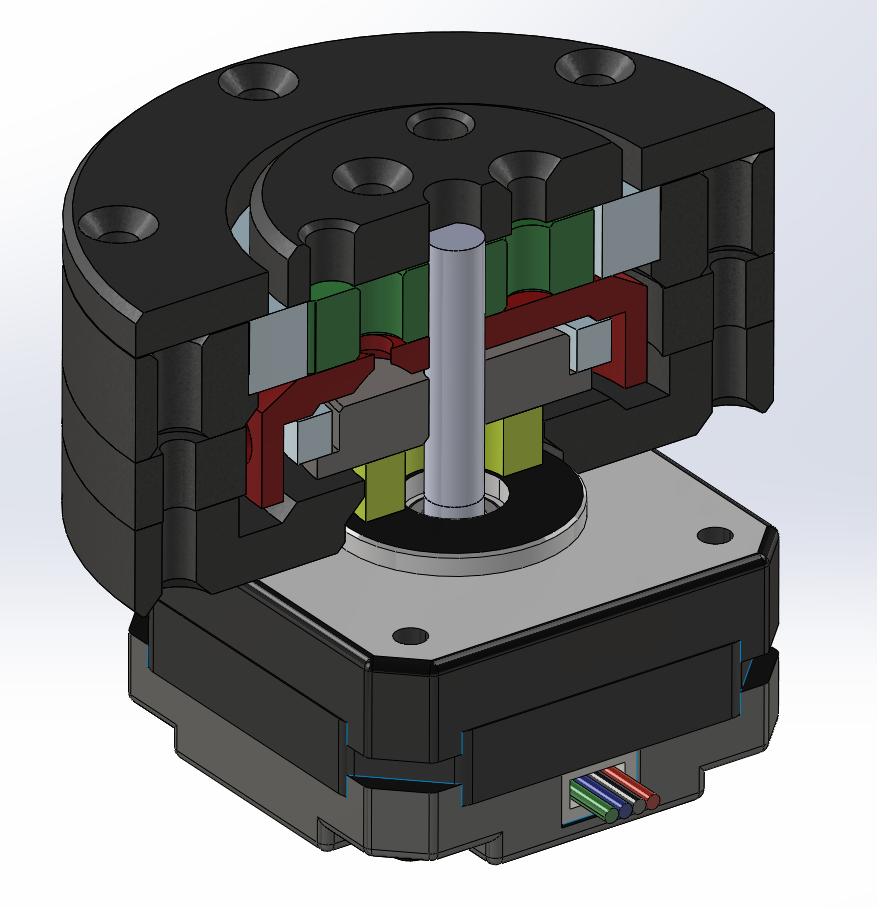
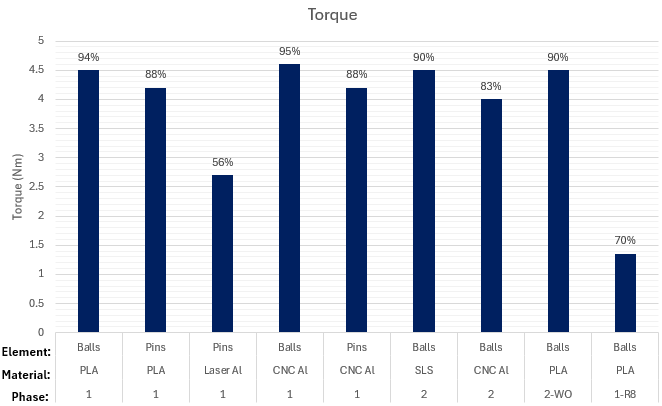
The motor I used for my tests, a Nema 17 stepper motor, has a torque output of 0.24 Nm. This value will be used for the torque efficiency calculations.
Below is a summary of the different torque results. For more details, feel free to check the project video on YouTube.
Each configuration was tested for backlash. We are essentially trying to find any play in the drive. As well as seeing the effect of using balls vs pins.
Below is a summary of the results.

I chose the 3D printed in PLA, 1-Phase design (with pins) for the endurance test. This represents the worst-case scenario since the Aluminum and SLS Nylon versions have superior mechanical properties and should last longer.
A 2.25 kg weight was mounted to the drive, resulting in a 3.3 Nm torque. It was then run for over one hour. The inspection of the drive revealed minimal wear to the wave disc.
Similar to the endurance test, I selected the PLA version for the max torque test. I clamped the eccentric cam to lock its rotation, and then applied torque until something broke.
The max torque reading was 21 Nm. Actually, after inspection, the components of the drive look intact. What likely happened is that the PLA disc deformed enough so that the rolling elements could skip to the next tooth.
To find the repeatability, I used a dial indicator at a distance of 135 mm from the center of the drive, and set it to zero.
I commanded the motor to move 90 degrees, then back 90 degrees in the opposite direction. Then I recorded the indicator value.
A value of 0.04mm corresponds to 1 arcminutes.
This type of wave reducer shows very promising results. It checks multiple boxes:
The .STEP and .STL files are available for download. If you would like to design your own, feel free to check the Wave Reducer Simulator tool to generate the wave profiles.
Additionally, if you are interested in purchasing the components of this drive, particularly the Wave Disc in CNC Aluminum, please check Join Waitlist to find out more.
© Me Vertuoso All Rights Reserved 2025